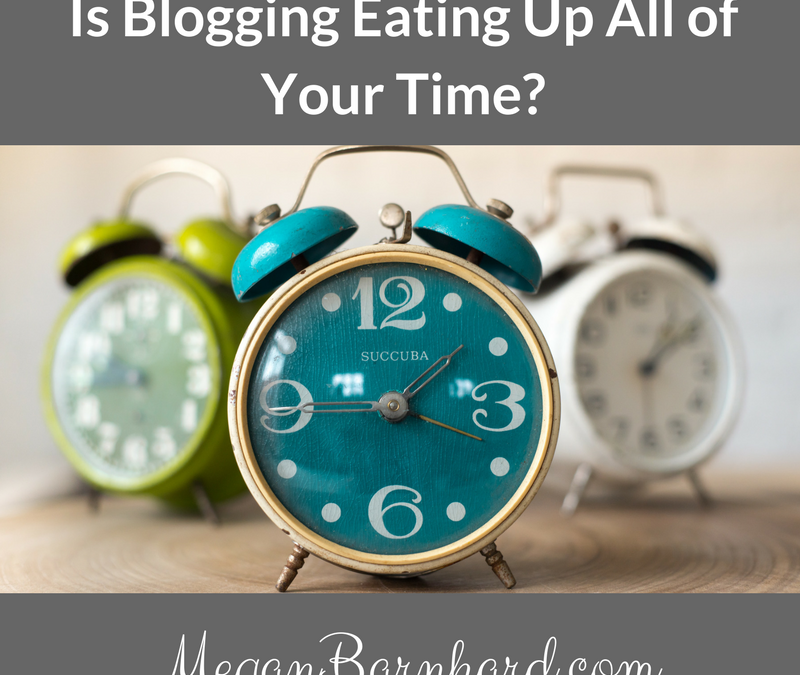You’ve been staring at your computer screen for an hour and you’re not any closer to finishing this #&%^$ blog post.
Meanwhile, your inbox is filling up with the usual requests, you’ve got a big deadline coming up for a client, and you need to call the bank before you forget—again.
Being a business owner is hard enough without trying to sit down and craft a heartfelt epistle every week.
But you know you’re supposed to be blogging. All the experts agree. So, you continue to tear your hair out, letting the important work of your business fall by the wayside.
It feels awful, right? To sacrifice one part of your business for another? To feel like the things you “have to” do push out time for the things you know you need to do to serve your clients and keep your sanity.
I’ve been there.
My Own Blogging Blues
I’ve spent hours upon hours crafting blog posts. In many cases, only to realize that what I had written didn’t end up on the topic I was even trying to cover in the first place.
I’ve poured my heart out onto paper (well, computer screen) and ended up with posts that were definitely heartfelt, but were also so rambling, long, and disjointed that I actually had to scrap them!
That means I poured all that time and creative energy down the drain.
I kept doing this until I discovered the one thing that makes the difference between drowning in a blog post, and being able to bust out a decent draft of it in just 25 minutes: templates.
Mind = Blown
My first introduction to a blog template was from blogger and content strategist Lacy Boggs. I started using her Perfect Blog Post Template and my mind was blown.
All of a sudden I could write a blog post in a reasonable amount of time! I was finishing in an hour instead of four. (Yes, I had seriously been spending up to four hours on single blog posts—just on the rough drafts!)
But I noticed other benefits as well. Since each section of the template had a specific purpose, I started being choosier about what I wrote. It was easier to just say “No” to long tangents.
It was also easier to know the value I was giving to readers. This made it easier to do everything from choosing a title to selecting a stock image because I knew what my posts were about and what they were giving readers.
The coolest thing that started happening, though, was that I started getting two-for-ones, or even three-for-ones. I would be writing along in the template and realize that my idea was too big for it.
Instead of scrapping the whole thing, I would break up the topic into a series of two or three posts! If you blog regularly, realizing that you’ve got a series on your hand is like Christmas! It means less planning.
And, since you’ll have the momentum of thinking about the whole topic, it’s likely you’ll be able to write the whole series in one go. Or at least outline all the posts at once. The more you can “batch” your writing in this way—by doing several of the same kind of task together in one sitting—the more efficient you’ll be.
The Next Level of Blogging
The real magic happened when I took the concept of a template and turned it into my favorite writing tool: a writing recipe.
A writing recipe is a set of instructions designed to help you accomplish a certain writing task. It tells you what to write, and in what order, but just like a recipe you’d use in the kitchen, it’s also highly adaptable to what works for you.
For example, I really like to use hypothetical examples in blog posts to help people imagine what I’m talking about. But other people might prefer to use real-life examples or skip the examples altogether.
As I developed my recipes, I realized that I could be using my blog for a LOT more than giving tips and advice.
I could help people see that there was hope in their situation by showing them that I’d been where they are now — or that one of my clients had.
I could speak to the fears and objections they might feel about writing for their business and give them a boost of confidence or inspiration.
I could even showcase my special sauce — the way I do things that’s different from other writing coaches.
Start Using Blogging Recipes
If you’re spending too much time, energy, and sanity writing your blog posts, a recipe will be a game-changer.
You can make your own and experiment with what works for your writing style. Or you can skip the hard part and get started with my 5 tried and true blog post recipes. These are the recipes that I use with my private clients to help them create content with purpose. Without the stress!
The recipes are designed to show off your expertise while building a real connection with your audience through storytelling and examples.
Grab the blog recipes here.
See you on the other side of the blogging blues. ?

